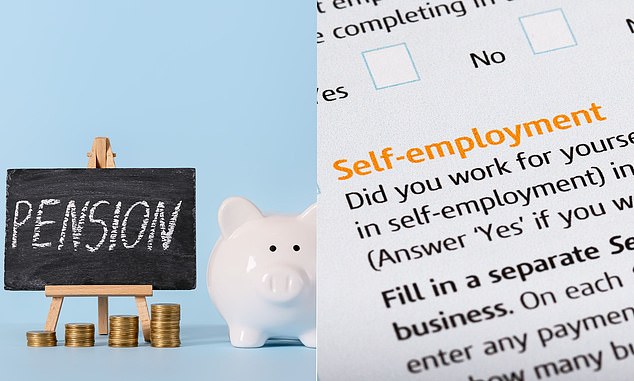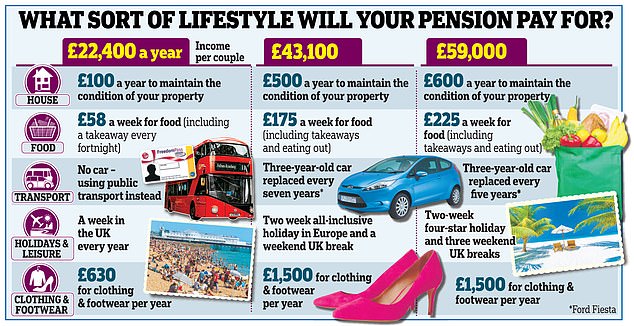Entrepreneurs often say that one of the best parts of working for themselves is the flexibility and freedom.
But once they reach retirement age, this flexibility and freedom could come to an abrupt end.
A recent report by Scottish Widows found that four in 10 self-employed people are not on track to have even a minimum standard of retirement living, equivalent to £14,400 a year for a single person.
Entrepreneurs may be used to taking risks, but paying into a pension is an area where they might do well to consider playing it safe. While some might be betting on selling their business or putting their money into other investments, this comes with some downsides.
We explain what sole traders are entitled to receive from a state pension and why paying into a private pension is important.

Are sole traders entitled to the state pension?
The self-employed are entitled to the state pension in the same way as anyone else, but since 2016 it has been entirely based on their National Insurance record.
If you have paid National Insurance contributions while operating as a sole trader, you will be entitled to some state pension.
You'll usually need at least 10 qualifying years on your National Insurance record to receive any state pension, and at least 35 qualifying years to receive the full amount.
means it will rise with inflation, average earnings or 2.5 per cent - whichever is highest.
If you have worked for someone else in the past, you may be entitled to the additional state pension under an old system. This is called a 'protected payment' and it is the difference between the full new state pension and your 'starting amount'.
Why are so few sole traders paying into a pension?
While auto-enrolment means workplaces now have to provide a workplace pension scheme and make contributions, there isn't an equivalent for the self-employed.
It means that many entrepreneurs consider there being little point to paying into a pension and opting instead for savings.
Emma Jones CBE, founder and chief executive of Enterprise Nation says: 'Entrepreneurs often plough every spare penny into their business in order for it to grow, so may feel there's little left over for themselves, at least in the early stages.
'They also may feel they will never retire, and as the retirement age rises higher and higher, that could be true.'
David Gibb, chartered financial planner at Quilter Cheviot, adds: 'Without this support, self-employed individuals must actively seek out and establish their own pension plans, which can be complex and time-consuming.
'Additionally, the irregular and often unpredictable nature of self-employment income can make it difficult to commit to regular contributions and for those contributions to then be locked away until retirement.
'There is also the challenge of prioritising immediate business expenses over long-term retirement savings, particularly when cash flow is tight.'
A number of entrepreneurs also say they will sell their business when they retire and so don't need to worry about paying into a pension, but there is no guarantee this will work.
The business could fail to sell or even go bust before retirement, so sole traders need to consider a back-up plan.
There are around 4.8million self-employed people in the UK, accounting for 15 per cent of the UK workforce, but just 31 per cent save into a pension, according to the Association of Independent Professionals and the Self-Employed.
.
There may be a belief among sole traders that without employer contributions, there's very little point bothering with a pension and therefore they might opt for cash savings instead.
Why it's important to pay into a pension
The state pension is a good base, but it is unlikely to provide you with enough of an income, which is why it's so important to also put some money into a personal pension if you can.
The Pensions and Lifetime Savings Association says a moderate retirement income for a single person is £31,300 a year, nearly £20,000 more than what the state pension provides.
A 'comfortable' retirement for a single person would require an income of £43,100 a year or £59,000 for a couple.
Gibb says: 'Many people wrongly assume that the state pension is a safety net for them, but people need to view the state pension as a foundational element of their retirement strategy and by no means the only one.
'The truth is no one is going to save for retirement for you and self-employed people must take their retirement provision into their own hands.'

.
Gibb says: 'Without a pension plan, you rely solely on personal savings or investments to fund your retirement, which can be unpredictable and insufficient.
'The lack of regular pension contributions means you miss out on compound growth, which can significantly enhance your retirement savings over time.
There are also some important tax breaks you will miss out on if you neglect to pay into a pension. You will get tax relief on your pension contributions - the lower of your annual earnings or £60,000 a year.
If you're a basic rate taxpayer, the Government will add an extra £25 to every £100 you pay into your pension.
If you pay the higher rate tax in England, Wales or Northern Ireland, you can claim back a further £25 via your tax return for every £100 you pay.
How to set up a private pension
If you're looking to set up a personal pension you will need to choose where and how you invest your contributions.
There are plenty of investment platforms that offer these and they will claim tax relief at the basic rate and add it to your pension savings.
You can opt for a personal pension, which are provided by most large providers, but you may want to consider other options.
You could choose a stakeholder pension which are subject to a cap on charges or a self-invested personal pension (Sipp) which tend to have a wider range of investment options.
> The best investment trusts for your pension
While you can save as much as you like into a pension each year, there's a limit on the amount of savings that you'll receive tax relief on.
You can get tax relief on your pension up to the annual allowance, currently £60,000, or your annual income. If you exceed the allowance, the tax relief will be clawed back at source.
On top of this, you'll want to make sure you keep an eye on any charges relating to your pension pot, especially for Sipps.
AJ Bell charges a 0.25 per cent shares account charge and an additional 0.25 per cent funds account fee up to £250,000, which reduces to 0.10 per cent between £250,000 and £500,000, and no charge over £500,000.
You will also be charged each time you buy or sell shares or funds.
Hargreaves Lansdown also charges a percentage fee on funds held in a Sipp - up to 0.45 per cent - while others might benefit from interactive investor's flat fee on accounts.
and their associated fees here.


Post a Comment
0Comments